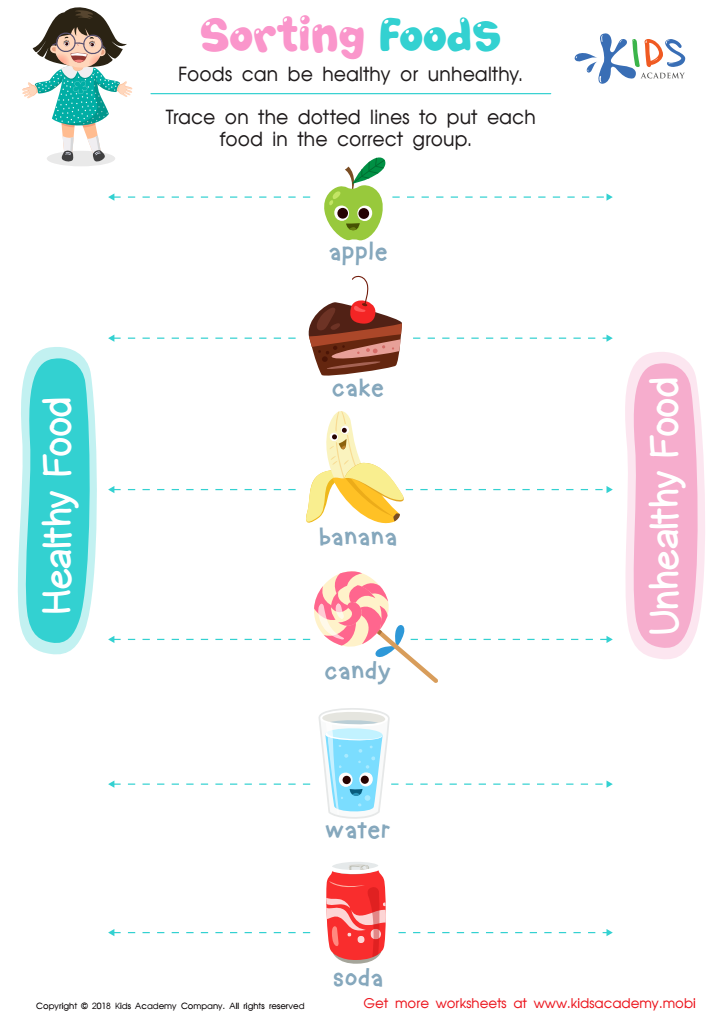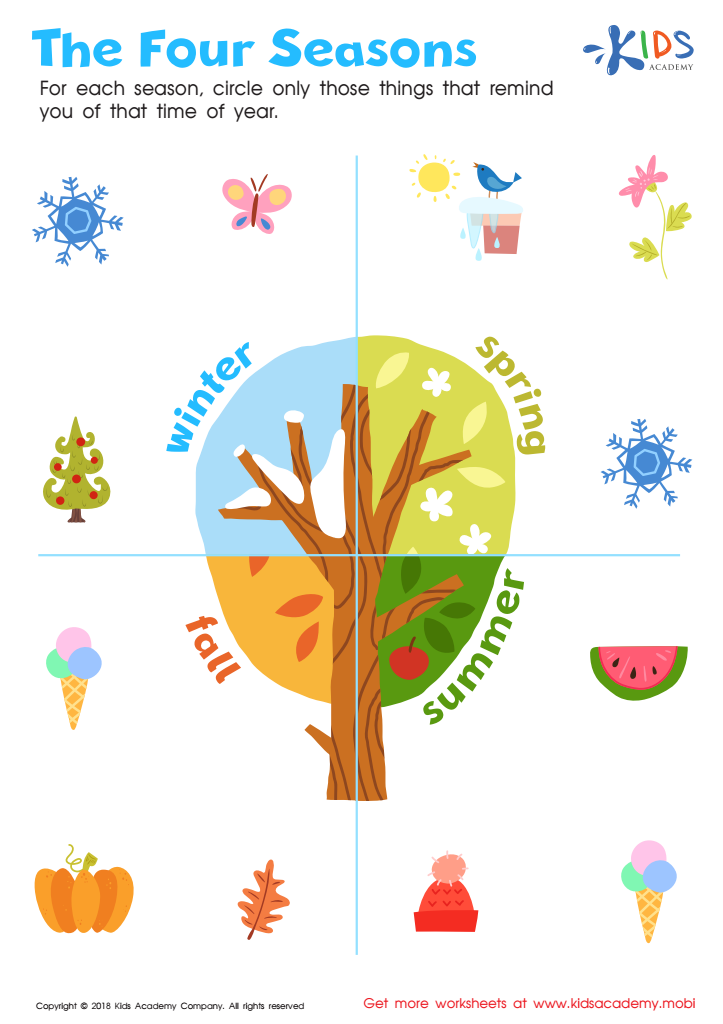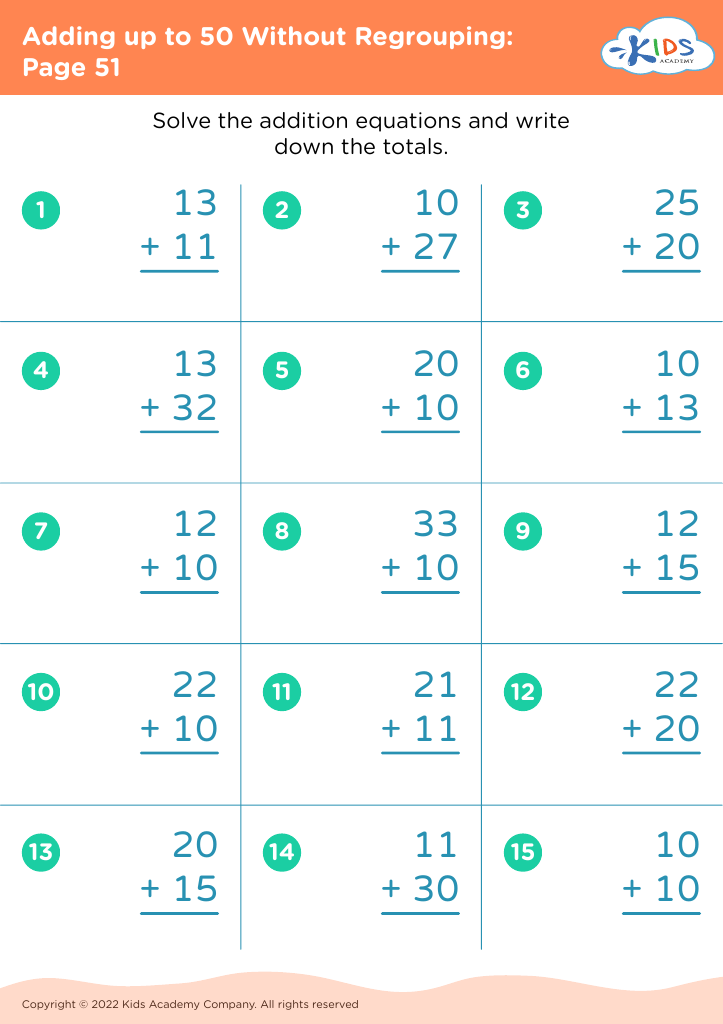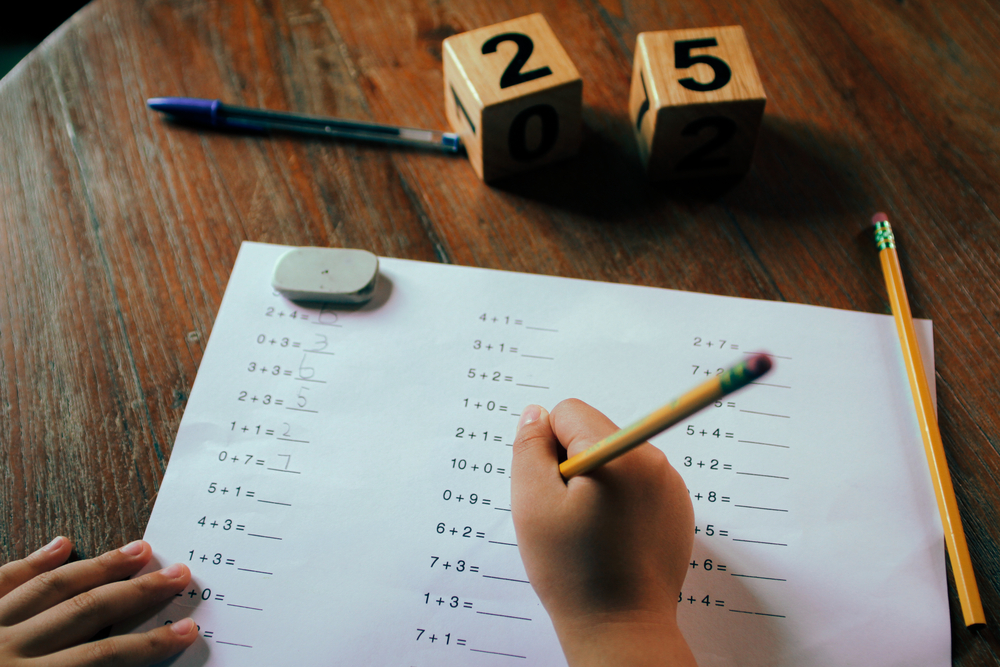Visual recognition Math Worksheets for Ages 5-9
6 filtered results
-
From - To
Discover engaging "Visual Recognition Math Worksheets for Ages 5-9" at Kids Academy. These printable worksheets enhance early math skills through colorful and interactive activities. Children will strengthen their number recognition, pattern identification, shape matching, and counting abilities. Perfectly tailored for young learners, these worksheets make learning math fun and effective, encouraging hands-on practice and visual learning. Parents and educators can easily download and use these resources to support classroom lessons or at-home enrichment. Empower your child's math journey today with our expertly crafted visual recognition worksheets!


Sorting Food Worksheet


Match It up Worksheet


Let's Look! Part 2 Worksheet


Skip Counting by 10 Through Our Community Worksheet


The Four Seasons Worksheet
Visual recognition in math is crucial for children aged 5-9 because it lays the foundation for higher-order thinking and problem-solving skills. At these ages, children are developing their ability to understand and manipulate abstract concepts, and visual aids make these concepts more tangible and comprehensible. For instance, using visual tools like number lines, shapes, and pictographs help children grasp fundamental math principles such as counting, addition, subtraction, and spatial awareness.
Visual representation fosters cognitive development by engaging multiple senses, which can improve memory retention and understanding. It bridges the gap between concrete objects and abstract symbols. For example, when children see a picture of three apples and then the number "3," they begin to associate the numeral with the quantity it represents.
Moreover, visual math recognition supports diversified learning styles. Not all children excel with rote memorization or auditory instructions; some are visual learners and benefit significantly from seeing problems worked out in front of them. This approach also encourages active engagement and participation, making learning more enjoyable and less intimidating.
Therefore, parents and teachers should emphasize visual recognition in early math education to build a solid and intuitive understanding of math concepts, prepare children for more complex mathematical tasks, and cater to the varying learning needs of young students. This method helps ensure broader academic success and a positive attitude towards learning math in the future.
 Assign to My Students
Assign to My Students




















